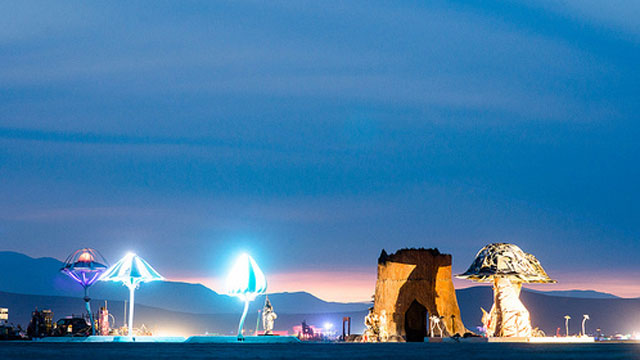Every year for one week, bold, super-sized works of art spring to life in one of the harshest yet most starkly beautiful settings imaginable… the Black Rock Desert of Nevada. With hundreds of original works, performances, and theme camps spanning five square miles, and more than 60,000 attendees, Burning Man has become North America’s largest outdoor art festival. At the core of the Burning Man art aesthetic is participation and interactivity. Many pieces involve community volunteers who put in hundreds of hours on elaborate large-scale works that are meant to be touched — and often torched. The vast majority of the monumental metal sculptures are made in the Bay Area, the place where Burning Man got its start in 1986.
The Boxshop, in San Francisco’s India Basin, is home to the Flaming Lotus Girls, a female-driven team of artists who pushed themselves to the limit to create Xylophage, a giant tree stump with larger-than-life fire-breathing fungi, for this year’s event. The Flaming Lotus Girls up the ante for viewer participation each year, creating immersive environments where spectators control the flame and sound effects.

The influence of the Burning Man art scene is spreading beyond the desert playa. Over the past decade iconic sculptures have found new homes in urban settings, and major civic installations by former “burners” like Leo Villareal (The Bay Lights) are gaining critical and popular acclaim.
One of the forces behind this trend is the Black Rock Arts Foundation, whose mission is supporting community-driven interactive projects with a Burning Man aesthetic. As long-time “burner” and Black Rock Arts Foundation Executive Director Tomas McCabe puts it, “Art that’s meant to be interacted with is much more interesting. It’s an interesting dynamic; it’s really fun and it’s a little bit foreign in this world of museums and caution tape and don’t touch. And it’s kind of magical to be able to be invited to interact with something. So we wanted to bring that magic back.”

